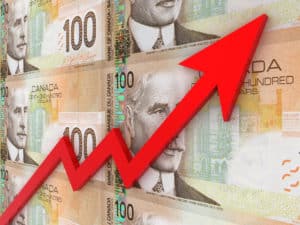In Canada, it’s important to note that not all dividends are created equal. Dividends fall into several baskets: Canadian eligible, non-eligible and foreign dividends.
Eligible dividends are those deemed eligible by public corporations. Most of what you receive in dividends from your equities investments will qualify as eligible dividends. What is particularly attractive about this type is that it is eligible for the Enhanced Dividend Tax Credit (DTC).
Non-eligible dividends, also referred to as ordinary dividends, are received from Canadian-controlled private corporations (CCPCs) and are taxed at the small business rate.
These dividends are not subject to the enhanced DTC — an important distinction to make. Although the dividend from majority of publicly traded companies does qualify as eligible, there are several of which a portion of the dividend is deemed non-eligible.
Why does this happen? Simply put, the non-CCPC owns shares or has received income from the CCPC.
So why the distinction? It all comes down to taxes. Dividends are paid from after tax earnings, which means that the corporations have already paid taxes on these dividends.
Non-CCPCs have a higher tax rate than CCPCs and as such, are subject do different dividend gross-ups and tax credits – two mechanisms that are utilized to ensure individuals are not double taxed.
The dividend gross up is used to account for applicable taxes that have already been paid on the dividend. In 2019, the dividend gross ups are as follows:
- Eligible Dividends – 38%
- Non-Eligible Dividends – 15%
This means that if you received $100 in dividends, it would be grossed up to $138, $115 or somewhere in-between had you received both eligible and non-eligible dividends.
This is the amount investors would report as taxable income. Individuals are then taxed based on their marginal tax rate, which is anywhere between 15-33%. But wait, there’s more: enter the federal DTC.
The federal DTC is an incentive designed to reduce the amount of taxes one pays on the dividend. In 2019, the federal DTC as a percentage of taxable dividends is 15.0198% for eligible dividends and 9.0301% for non-eligible dividends.
The tax credit is then applied against the tax owed on the grossed-up dividends. Simply put, it has the net effect of reducing an individual’s marginal tax rate on dividends to a point that it is lower than the tax rate on employment income, interest and foreign dividends.
For those in lower tax brackets, the marginal tax rate on dividends can also lower the marginal tax rate for capital gains.
What about foreign dividends? These are the least attractive, as they are not eligible for the gross up and subsequent DTCs. As such, investors pay a higher tax rate on these types of dividends.
It is important for investors to understand the difference. How will you know? For those invested in the stock market, dividends are marked as eligible or non-eligible on your T5 statement of investment income.
As mentioned previously, the majority of publicly traded companies pay eligible dividends. Some however, pay out a combination of eligible, non-eligible and foreign dividends.
These are often found in REITs and limited partnerships. One such company is Brookfield Infrastructure Partners (TSX:BIP-UN)(NYSE:BIP).
In 2018, the company paid no eligible dividends and as such, the entire distribution paid out by Brookfield Infrastructure would have not been eligible for the enhanced dividend tax credit.
In fact, the majority of their distributions came from foreign dividend and interest income, which means that investors would be taxed on a much higher tax rate on income received from BIP.
Although you should receive this information from your broker, Brookfield has the information posted in detail on their website, as do most other public corporations.
Of note, you’ll notice that Brookfield does not refer to the quarterly payout as a dividend, but as a distribution, This is one of the first signs that income you receive from a company may not be eligible.
How can you avoid higher taxes? Hold these types of investments in your registered accounts such as your TFSA and RRSP.








